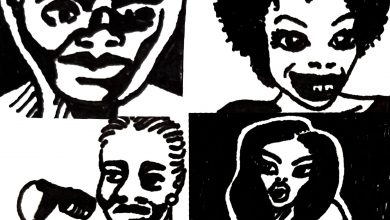Feminism 101: What Is Feminism?

Illustration by Katherene Quiteno.
If you Google “what is feminism,” you will find a varied range of definitions. Urban Dictionary calls it “the belief that all people are entitled to the same civil rights and liberties and can be intellectual equals regardless of gender.” Dictionary.com describes feminism as “the doctrine advocating social, political, and all other rights of women, equal to those of men.” Merriam-Webster, interestingly enough, has a “simple” definition and a “full” definition, with the full definition being the “theory of political, social, and economic equality of the sexes.”
While all these definitions vary slightly, they all have one thing in common: a focus on gender. This is perhaps the extent of common ground amongst all the different spheres of feminism as well.
The word “feminism” started appearing in the early 20th century. Its usage climbed sharply in the 70s and 80s, and peaked in 1996. It’s pretty recent, so it’s safe to say that we have just begun ironing out the kinks.
As I pointed out, the most agreed-upon common ground is that feminism has a focus on gender equality. Definitions of feminism often call this equality “social, political, and economic.” This means, amongst many other things, representation in politics, equitable access to resources, equal pay, breaking down harmful stereotypes and misogynistic language, and fighting oppressive social norms about gender. Feminism obviously strives towards these goals because of the history of oppression that has denied women the kinds of opportunities that have been made available to men.
But feminism is also a way of being that is highly subjective. The ways in which people interpret and practice a feminist way of being are very different, depending on the people themselves and what they value. Vivian Giang, Editor-In-Chief of FEM, compares feminism to pasta, in that there are different kinds of pasta, and yet they are all pasta. This is a very useful analogy to use in thinking about feminism and what it means (thanks Vivian): the ultimate feminist goal looks different to different people. To many, their Feminist Utopia is a Judith Lorber-esque post-gender society. But many transgender rights advocates criticize this goal as being trans-exclusionary, and say that it comes from a place of cisgender privilege, and that it is impossible to do so in a world in which many trans folks’ gender identities are invalidated on a daily basis. Despite who you might agree with–and many would agree with the latter–both parties identity as feminist. Neither is less feminist than the other.
Furthermore, not all differences in the feminist movement are that easy to distinguish. For example, many feminists realize that even though the movement focuses on gender equality, “gender” does not exist outside of race, class, sexuality, disability, and other intersecting identities. These feminists incorporate this intersectional way of thinking into their feminist practice. But many do not (see: Lena Dunham, Amy Schumer, Hillary Clinton), and they still have the right to identify as feminist. Although feminism is grounded in a criticism of gendered ways of being, it’s up to you how deep you want to take your critical thought.
Ultimately, “feminist” is less an adjective and more an identity. The people who self-identify as feminist are diverse and heterogenous, all with different interpretations of one common idea: gender equality.




